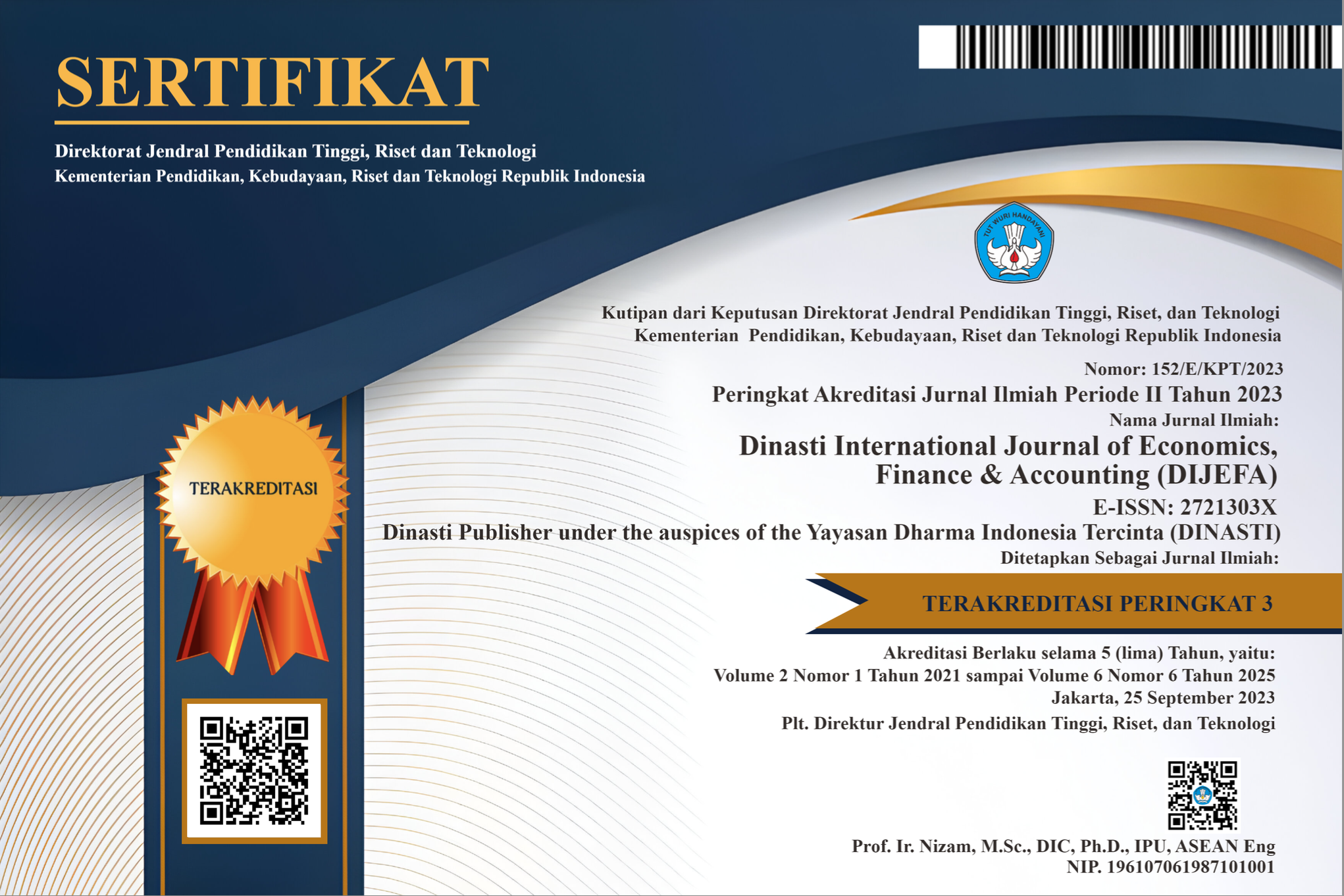Analysis of Gen Z Preferences Towards Digital Payment Qris for Motorcycle Parking Fees
DOI:
https://doi.org/10.38035/dijefa.v6i2.4106Keywords:
Digital Payment, QRIS, Financial Technology, Rasch ModelAbstract
In recent years, digital payments have transformed the way people manage financial transactions, including for small-scale payments such as motorcycle parking fees. This study investigates the preferences of Generation Z towards using QRIS (Quick Response Code Indonesian Standard) for motorcycle parking fees. This article discusses a study that analyzes the adoption of QRIS (Quick Response Code Indonesian Standard) payments among Generation Z in the motorcycle parking fee sector on the island of Java. The research method used is a survey with a questionnaire, and data processing employs the Rasch Model, a theory of item response that describes the relationship between respondents' abilities and the difficulty level of the items. The research results indicate that performance expectations and social support significantly influence Generation Z's decision to adopt QRIS, while the main challenges faced are related to personal data security and internet network infrastructure. QRIS is considered a practical and efficient payment solution that helps address cash issues in situations like parking payments. The research is limited to Gen Z preferences, QRIS payment methods, and specific areas, so the results may not be representative of the broader population. Respondent bias and limited access to technology and data also affect outcomes. This research examines how QRIS can bolster the digital economy during challenging times by promoting financial inclusion and supporting small to medium-sized businesses. It offers valuable insights for stakeholders to enhance QRIS adoption and address these challenges.
References
A. Lesmana. (2019). Analysis of Acceptance of Mobile Payment as an Alternative Transaction of Parking Payment. Journal of Theoretical and Applied Information Technology, 15(9).
Bond, T. G., & Fox, C. M. (2013). Applying the Rasch model: Fundamental measurement in the human sciences. Psychology Press.
Darmawan. (2024). Jumlah Kendaraan Bermotor Sepeda Motor Tertinggi Ada di Jawa Timur dengan 21,12 Juta Unit.
Fauzianto, R. A. (2022). Analisis Sentimen Opini Masyarakat Terhadap Tech Winter Pada Twitter Menggunakan Natural Language Processing. Jurnal Syntax Admiration, 3(9), 1577–1585.
Gunawan, A., Fatikasari, A. F., & Putri, S. A. (2023). The effect of using cashless (QRIS) on daily payment transactions using the technology acceptance model. Procedia Computer Science, 227, 548–556.
Hermanto, B., & Miftahuddin, A. (2021). Tourism experience in Indonesia: a new approach using the rasch model scale. Geo Journal of Tourism and Geosites, 38(4), 1051–1056.
Puspitasari, A., & Salehudin, I. (2022). Quick Response Indonesian Standard (QRIS): Does Government Support Contribute to Cashless Payment System Long-term Adoption? Journal of Marketing Innovation (JMI), 1(2), 27–41.
Rachman, A., Julianti, N., & Arkoyah, S. (2024). Challenges and Opportunities for QRIS Implementation as a Digital Payment System in Indonesia. EkBis: Jurnal Ekonomi Dan Bisnis, 8(1), 1–13.
Tan, L. Van, & Hung, P. M. (2024). Driving Digital Transformation in Certificate Management: A Blockchain-Based Solution for Vinh University. International Journal of Information and Education Technology, 14(1), 119–124.
Widayat, W., & Masudin, I. (2023). QR-code-based payment. Does the consumer intend to adopt a retail buying transaction? Banks and Bank Systems, 18(3), 1.
Žurbi, T., & Gregor-Svetec, D. (2023). Use of qr code in dairy sector in slovenia. SAGE Open, 13(2), 21582440231177028.
Downloads
Published
How to Cite
Issue
Section
License
Copyright (c) 2025 Lailatun Mubarokah

This work is licensed under a Creative Commons Attribution 4.0 International License.
Authors who publish their manuscripts in this journal agree to the following conditions:
- The copyright on each article belongs to the author(s).
- The author acknowledges that the Dinasti International Journal of Economics, Finance & Accounting (DIJEFA) has the right to be the first to publish with a Creative Commons Attribution 4.0 International license (Attribution 4.0 International (CC BY 4.0).
- Authors can submit articles separately, arrange for the non-exclusive distribution of manuscripts that have been published in this journal into other versions (e.g., sent to the author's institutional repository, publication into books, etc.), by acknowledging that the manuscript has been published for the first time in the Dinasti International Journal of Economics, Finance & Accounting (DIJEFA).


























































